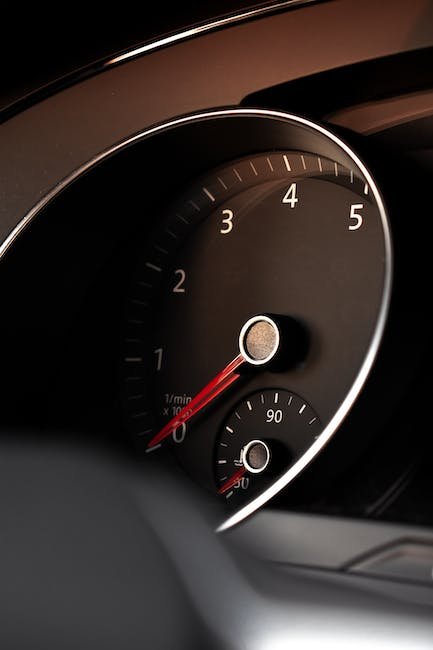Have you ever wondered how a seemingly innocent twist of a small, metallic instrument can unveil the secrets hidden behind an impenetrable lock? Welcome to the enigmatic world of lock picking, where skilled practitioners employ the formidable force of torque to conquer what was once deemed impregnable. Today, we embark on a journey that delves deep into the mysterious role of torque in the art of lock picking. With an unbiased lens and an appetite for knowledge, we seek to unlock not only the mechanisms behind this ancient craft, but also the fascinations and curiosities that lie within. Join us as we daringly explore the intricate dance between torque and tumblers, and unravel the secrets that make locks feel a little less secure.
Table of Contents
- Introduction: Understanding the Intricacies of Torque in Lock Picking
- The Fundamentals: Exploring the Relationship Between Torque and Pin Movement
- Unveiling the Technique: Leveraging Torque for Manipulating Lock Pins
- Mastering Torque Control: A Comprehensive Guide to Developing Precision
- Tools and Recommendations: Unlocking Success with the Right Torque Equipment
- Q&A
- Key Takeaways

Introduction: Understanding the Intricacies of Torque in Lock Picking
Lock picking is an intricate skill that involves manipulating the internal mechanisms of a lock to gain access without the original key. One of the fundamental aspects of lock picking is understanding the concept of torque. Torque, also known as rotational force, plays a crucial role in successfully picking a lock. By applying precise and controlled torque to the lock cylinder, a lock picker can effectively manipulate the lock pins and ultimately unlock the mechanism.
When it comes to torque in lock picking, precision is key. A lock pick is inserted into the keyway, which is the narrow opening of the lock. Applying too little torque will lead to a lack of tension, causing the lock pins to remain in place and preventing the lock from unlocking. On the other hand, applying too much torque can cause the pins to bind and jam, making it impossible to manipulate them. Achieving the perfect balance of torque is essential for successfully navigating the intricate world of lock picking.
It is important to note that different locks may require varying degrees of torque, making the process even more challenging. Some locks may have tighter tolerances, while others may be more forgiving. Additionally, the type of lockpick being used can impact the amount of torque needed. By experimenting with different levels of torque and adjusting according to the feedback from the lock, aspiring lock pickers can develop the finesse and intuition required to understand the intricacies of torque in lock picking.

The Fundamentals: Exploring the Relationship Between Torque and Pin Movement
Exploring the Relationship Between Torque and Pin Movement
When it comes to understanding the dynamics of rotational motion, torque and pin movement are key players that contribute to the overall performance of various mechanical systems. Torque, simply put, refers to the measure of the force that causes an object to rotate around an axis. On the other hand, pin movement refers to the displacement or travel of a pin or pivot point within a system.
Understanding the intricate relationship between torque and pin movement is crucial in various applications such as machinery, robotics, and engineering. Listed below are some fundamental aspects to consider:
- Determining Torque: Torque can be calculated by multiplying the applied force with the distance between the axis of rotation and the line of action of the force. This determines the rotational force exerted on an object or system.
- Influencing Pin Movement: The force exerted by torque has a direct impact on the movement of pins within a system. Higher torque results in greater pin displacement, while lower torque leads to reduced pin movement.
- Friction and Torque: Friction plays a significant role in the relationship between torque and pin movement. Higher friction between a pin and its housing will result in increased torque requirements for the same desired movement, while lower friction allows for smoother rotation with lesser torque.
In conclusion, comprehending the relationship between torque and pin movement is vital to harnessing the full potential of mechanical systems. By understanding how torque influences pin displacement and considering factors like friction, engineers can optimize the performance and efficiency of various applications.

Unveiling the Technique: Leveraging Torque for Manipulating Lock Pins
When it comes to the art of lockpicking, understanding the mechanics behind manipulating lock pins is crucial. One of the most effective techniques that locksmiths and hobbyists alike rely on is the method of leveraging torque. By applying force to the lock cylinder, this technique allows for precise manipulation of the lock pins to gain access.
Here are some key insights into leveraging torque to manipulate lock pins:
- The importance of tension: Before starting the manipulation process, it is essential to apply tension to the lock cylinder using a tension wrench. This creates a binding effect that enables the lock pins to be manipulated individually.
- Incremental pressure adjustments: Once tension is applied, it is vital to apply incremental pressure using the torque wrench. With the right amount of pressure, each lock pin can be set into place, one by one, until the lock successfully turns.
- Navigating feedback: Feedback plays a crucial role in leveraging torque for lock manipulation. Picking up on subtle cues such as binding or springiness in the pins, practicing locksmiths can determine the correct amount of pressure needed to set the pins and open the lock.
Remember, mastering the technique of leveraging torque takes practice, patience, and finesse. It is an art that requires a deep understanding of the lock’s inner workings and careful maneuvering of the tools at hand. But with dedication and perseverance, this technique can unlock countless possibilities.

Mastering Torque Control: A Comprehensive Guide to Developing Precision
When it comes to achieving precision in any mechanical system, mastering torque control is of utmost importance. Whether you’re working with robotics, automotive engineering, or any other industry that relies on precise movement and control, understanding the intricacies of torque control is essential.
So, what exactly is torque control? It refers to the ability to regulate and exert rotational force accurately in a given system. By effectively managing this force, engineers can fine-tune the movement, acceleration, and deceleration of various components, leading to enhanced precision and overall performance.
Key Factors in Torque Control
Mastering torque control involves several key factors, each playing a significant role in achieving precision. These factors include:
- Motor Selection: Choosing the right motor with precise torque capabilities is crucial. Consider factors such as power requirements, motor type, and torque-speed characteristics to match the application’s needs.
- Sensor Integration: Implementing sensors to measure and provide feedback on torque levels is essential for maintaining precise control. These sensors can include load cells, torque transducers, or encoders, enabling real-time monitoring and adjustments.
- Control algorithms: Developing robust control algorithms that respond accurately to torque inputs is vital. These algorithms involve calculations, feedback loops, and proportional-integral-derivative (PID) controllers to ensure precise torque control.
- Calibration and Testing: Regular calibration and testing of torque control systems are critical to maintaining accuracy. These processes involve verifying sensor readings, fine-tuning algorithms, and conducting performance testing to identify any deviations.
- System Optimization: Constantly optimizing the torque control system for maximum efficiency and accuracy is a continuous process. This can involve analyzing data, adjusting control parameters, and fine-tuning mechanical components for optimal performance.
By understanding these crucial factors and implementing the right strategies, engineers can develop the expertise needed to master torque control. So dive into this comprehensive guide and unlock the secrets to achieving precision in your mechanical systems!
Tools and Recommendations: Unlocking Success with the Right Torque Equipment
When it comes to achieving success in any project or task, having the right tools is crucial. This holds especially true for professionals working with torque equipment. To ensure a job is done efficiently and accurately, it is essential to have access to the appropriate torque tools that meet the specific requirements of the task at hand.
Here, we present our top recommendations for torque equipment that can unlock success for professionals across various industries:
- 1. Torque Wrench: A torque wrench is a versatile tool that allows precise tightening of fasteners to a predetermined torque value. It is essential for applications where accuracy and consistency are paramount.
- 2. Torque Screwdriver: Ideal for projects involving delicate or sensitive components, a torque screwdriver ensures the correct torque is applied without damaging the materials. It is commonly used in electronics, machinery, and other industries that demand precision.
- 3. Torque Multiplier: When dealing with high torque requirements, a torque multiplier is indispensable. It helps users apply immense force while reducing the effort needed.
Remember, using the right torque equipment enhances efficiency, minimizes the risk of errors, and promotes safety in the workplace. Investing in high-quality torque tools is an investment in achieving success and delivering exceptional results.
Q&A
What is torque and how does it relate to lock picking?
Torque, in the context of lock picking, refers to the rotational force applied to a lock cylinder. It is crucial in lock picking as it manipulates the internal components, including the pins, allowing them to set in their proper positions.
Why is torque important in the lock picking process?
Torque is essential because it creates tension within the lock, causing the pins to bind against the cylinder’s housing. This binding effect creates the opportunity for the lock picker to manipulate the pins individually and eventually unlock the mechanism.
What happens if too much or too little torque is applied?
Applying too much torque can potentially damage the lock mechanism, making it more difficult to unlock. Conversely, applying too little torque may not provide enough tension to bind the pins and hinder the lock picker from successfully picking the lock.
How does torque affect different types of locks?
Different locks require varying amounts of torque. For example, pin tumbler locks need a consistent amount of torque to bind the pins, while wafer locks require less torque due to their simpler design. Some high-security locks, on the other hand, have additional security measures that require a higher degree of torque to overcome.
Can torque be adjusted during the lock picking process?
Yes, being able to adjust torque on the fly is a valuable skill for lock pickers. They may need to increase or decrease the torque to find the “sweet spot” where the pins align correctly, leading to successful lock picking.
Are there any risks associated with using torque in lock picking?
Although torque is necessary for lock picking, excessive force can damage both the lock and the lock pick tools. Additionally, if a lock is forced open with too much torque, it may be rendered unusable and require replacement. Therefore, caution and finesse are crucial to avoid any mishaps.
Is torque the only factor that determines successful lock picking?
No, torque is just one aspect of lock picking. Other factors include the skill and experience of the lock picker, the type of lock being picked, the quality of lock picking tools used, and the locksmithing techniques employed. All these factors must work together to achieve successful lock picking.
Key Takeaways
In conclusion, delving into the intricate world of lock picking and exploring the role of torque has allowed us to glimpse the fascinating interplay between physics, skill, and the mesmerizing art of unlocking. As we unraveled the secrets tucked away within a lock’s core, we discovered the quiet whispers of torque and its profound impact on the delicate dance between pins and tumblers.
With each twist and turn of our tension wrench, we embarked on a symphony of minute forces, delicately manipulating the pins to align with precise finesse. The enchanting equilibrium between applied force and resistance became our guide, leading us through a labyrinth of intricate wards and chambers.
Yet, beyond the mere brute force, we witnessed the need for an inherent connection, a symbiotic understanding between the lock picker and the lock itself. It is within this delicate balance that torque truly reveals its nuances. It is the craftsman’s gentle touch that dances on the edge of power and restraint, coaxing open the secrets held captive within.
Torque, in its essence, serves as the enigmatic key to this hidden world, unlocking both the physical barrier before us and the doors of curiosity in our minds. It transcends the boundaries of a mere technique, becoming an art form that demands patience, finesse, and an unwavering intuition.
Indeed, the role of torque in lock picking is a testament to the intricate dance between science and skill, where the artistry of the human touch meets the mechanical complexities of security. Embracing this deep dive into the shadows, we emerge with a newfound appreciation for the harmony of torque and the intoxicating allure of unlocking the unyielding.
As an affiliate, my content may feature links to products I personally use and recommend. By taking action, like subscribing or making a purchase, you’ll be supporting my work and fueling my taco cravings at the same time. Win-win, right?
Want to read more? Check out our Affiliate Disclosure page.